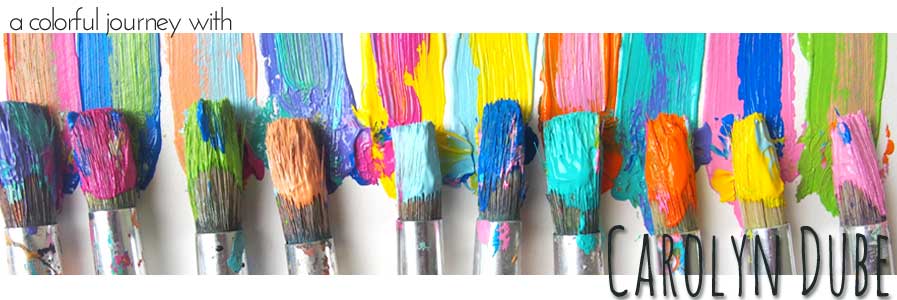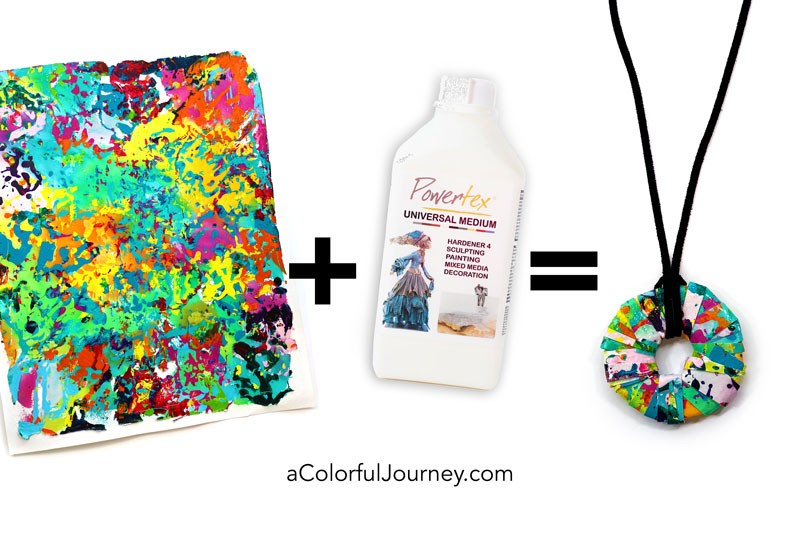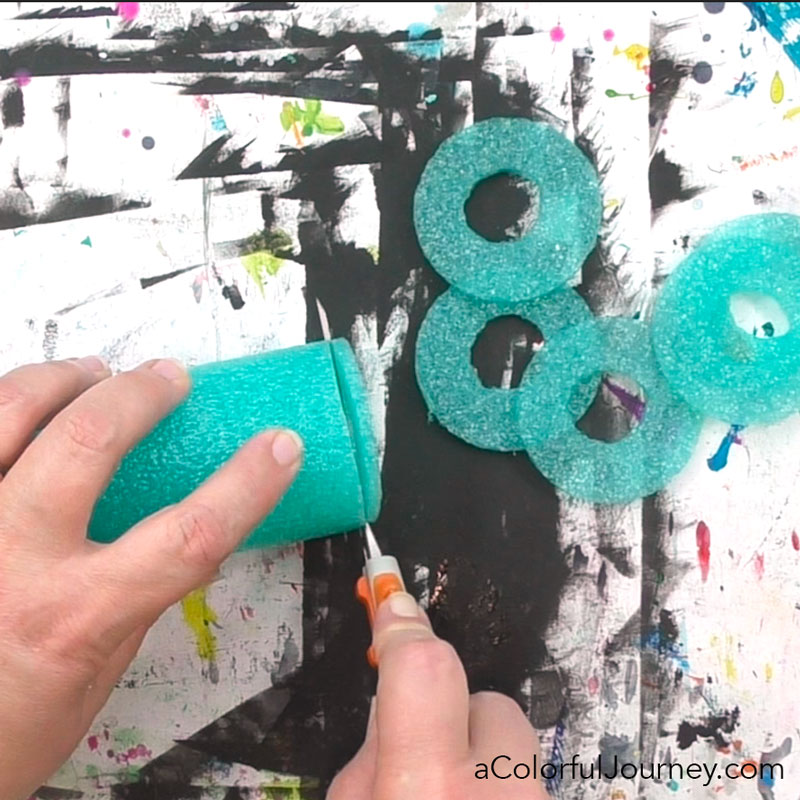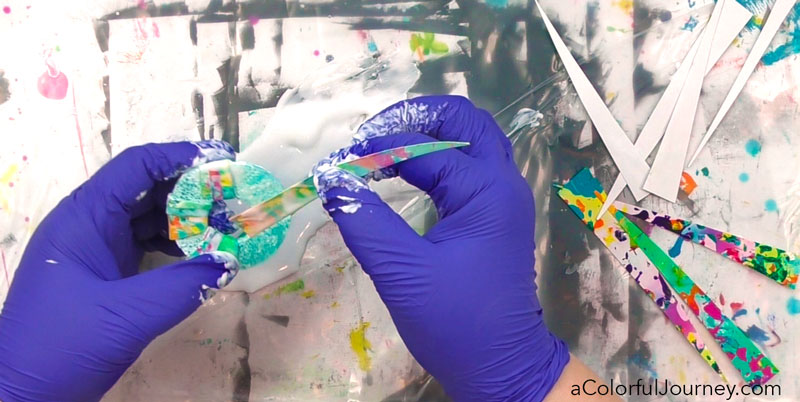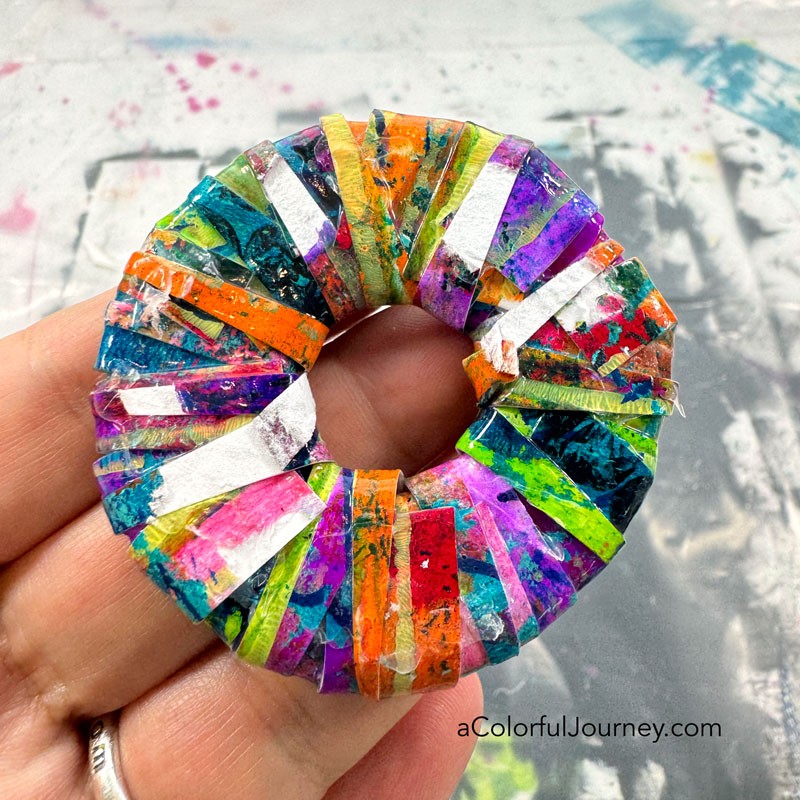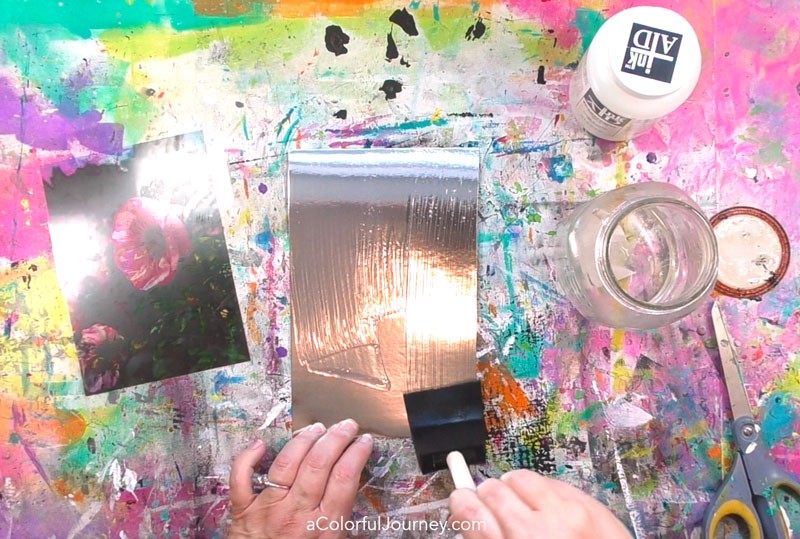What if there was a way to turn your gel prints into durable paper jewelry that’s waterproof, strong, and has a little shine to it? And do all that in one step? There is thanks to Powertex’s Universal Medium. Oh, and it’s non-toxic! Plus, it’s a very forgiving process!
DIY jewelry means you can customize it to exactly what size or color you want. At the end of the video, you’ll see three other necklaces I’ve made using smaller circles to give you even more ideas!

The Paper
Cut your papers into strips. My strips were about 2 inches wide.
When choosing gel prints, you can go for similar prints, contrasting prints (like what I did) or any other combination of papers that call to you! If you want to know more about gel printing, I’ve got all sorts of resources here.
The gel print with the words on it was created using one of my Random Thoughts stencils from StencilGirlProducts. and they were printed on a light weight card stock but this works with copy paper weight papers as well.
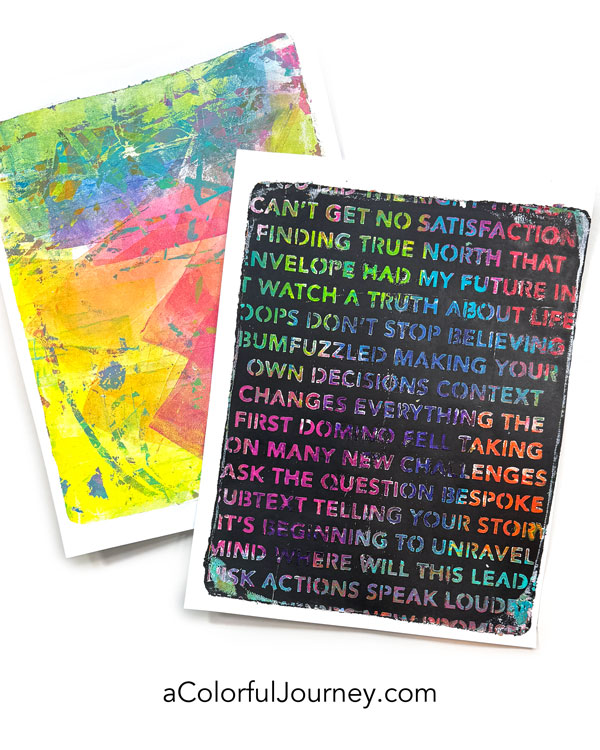
Universal Medium
The stuff that makes it happen is Powertex’s Universal Medium. The strips of paper are covered with this – check out the video for exactly how that’s done. It’s a simple process, and so much easier to quickly understand when you see it in action.
It will harden and seal the paper, and it can harden, seal, and make waterproof any absorbent natural material such as textiles, cardboard, leather, even fiberglass.
It comes in all sorts of colors, but I’m using the transparent because I want to be able to see the color and pattern of the gel prints. In the video, you see me using the 1000gr size and they also have a 500gr size available.

Once the paper strips are dry, then you can punch the circles. This was a 1 1/2 inch size circle punch and naturally you can use any size circle or shape you want.
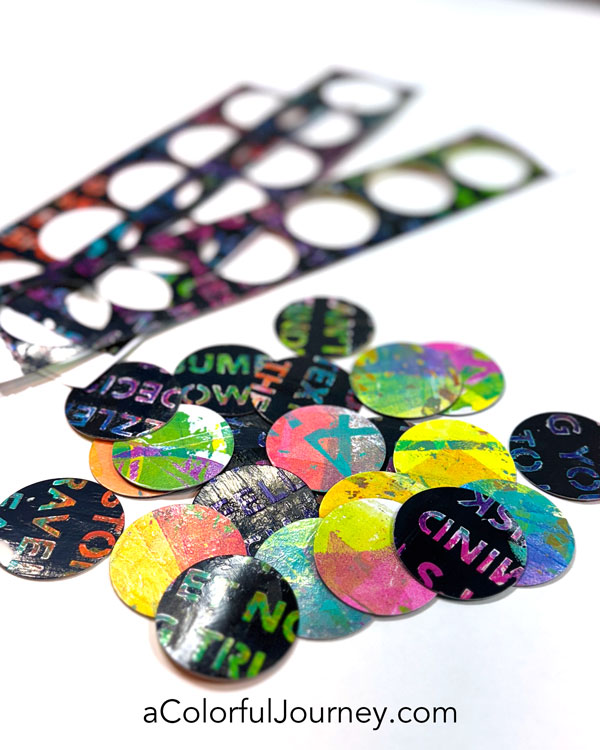
Sewing
Then you sew the circles into a garland. Just a simple straight stitch and as you’re feeding the circles to the needle, the only thing to watch out for is making sure they don’t overlap. Some of these have more space between them simply based on how fast you put the next circle on there. That won’t be a big deal, this is a very forgiving process.

Then add a chain and clasp and you’ve got your own custom necklace! Because the paper has been hardened with the Powertex Universal Medium, it means you can safely punch a small hole in the ends to attach the jump rings and chain.
Since this paper has been hardened and sealed, it can hold up to being worn. The paper won’t get that beaten and battered look, even if you wear it on a hot sweaty summer day!
The possibilities are endless – play around with different color palettes, sizes of circles, number of garlands in a necklace, or any other variable that calls to you!
If you’d like to see more ways I’ve played with gel prints and Universal Medium, check my pool noodle necklace.

Supplies:
Here are the supplies used. Some of these links may be affiliate links which means I may get a small percentage and it doesn’t cost you anything extra! And you get a really good feeling knowing that you are helping keep the free tutorials coming!
Powertex Universal Medium Transparent comes in multiple sizes. The size I used in the video is the 1000gr.
The circle punches were 1 1/8″ and 1 1/2″
You can use just about any chain and clasp you like. I bought the black chain, jump rings, and lobster claw clasp at Michaels in their jewelry department. When choosing a jump ring, go for a big one so that it’s not too tight on there with multiple garlands.

